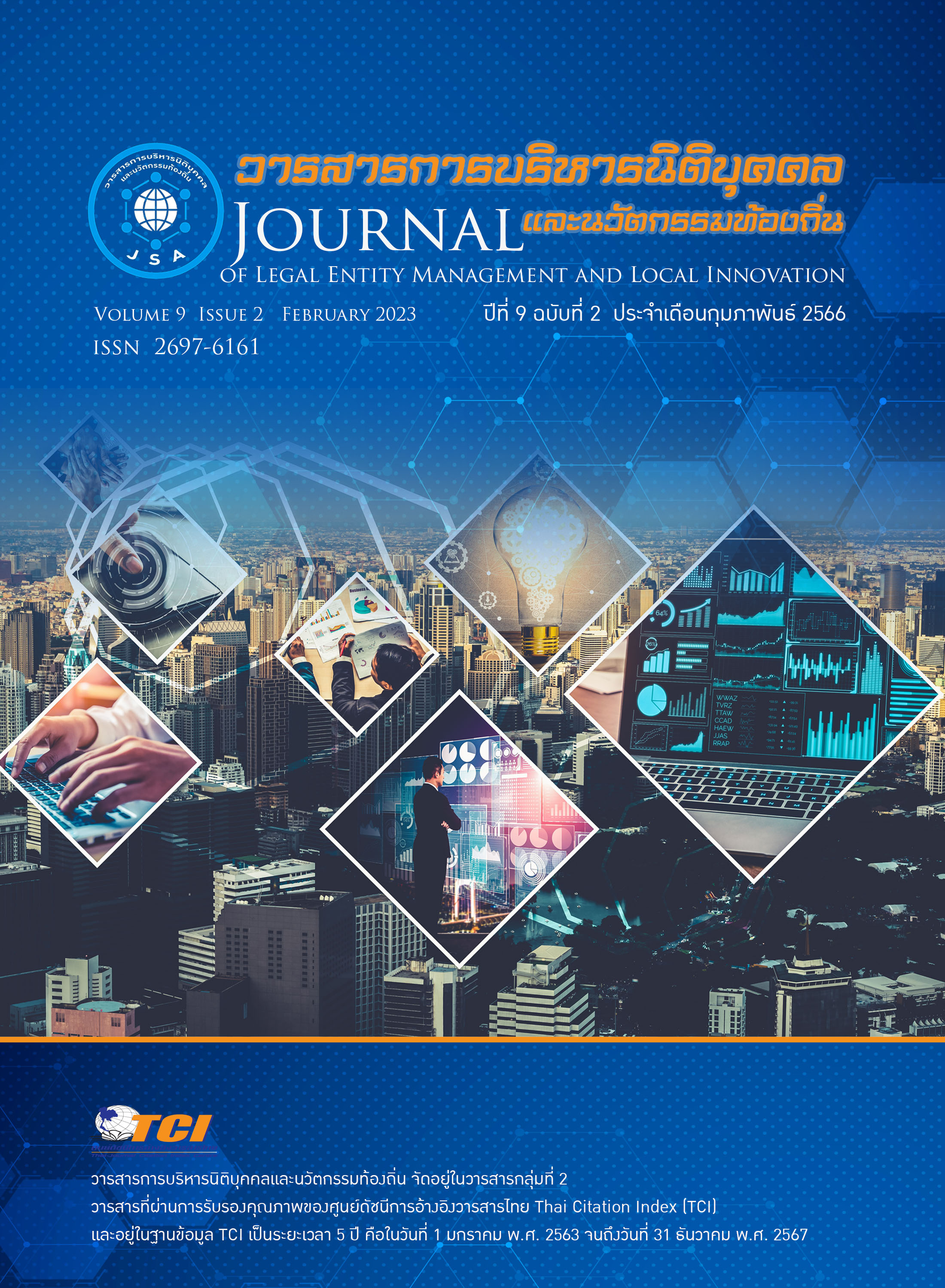การพัฒนาตนเองในการทำงานของผู้ปฏิบัติงานด้านพัสดุในมหาวิทยาลัยของรัฐ จังหวัดพิษณุโลก ในช่วงสถานการณ์โควิด-19
คำสำคัญ:
การพัฒนาตนเองในการทำงาน, การทำงานที่บ้าน, สถานการณ์โควิด-19บทคัดย่อ
บทความวิจัยนี้ มีวัตถุประสงค์เพื่อศึกษาปัจจัยจูงใจ ปัจจัยค้ำจุน และปัจจัยที่เกี่ยวข้องกับการทำงานที่บ้านที่ส่งผลต่อการพัฒนาตนเองในการทำงานของผู้ปฏิบัติงานด้านพัสดุในมหาวิทยาลัยของรัฐจังหวัดพิษณุโลก ในช่วงสถานการณ์โควิด-19 กลุ่มตัวอย่างที่ใช้ในการวิจัย ได้แก่ ผู้ที่ปฏิบัติงานด้านพัสดุในมหาวิทยาลัยของรัฐในจังหวัดพิษณุโลก จำนวน 111 คน เครื่องมือที่ใช้ในการวิจัย คือ แบบสอบถาม สถิติที่ใช้ในการวิเคราะห์ ได้แก่ ค่าความถี่ ค่าร้อยละ ค่าเฉลี่ย ค่าส่วนเบี่ยงเบนมาตรฐาน และการวิเคราะห์การถดถอยพหุคูณ ผลการวิจัยพบว่า 1) ระดับความคิดเห็นเกี่ยวกับปัจจัยจูงใจของผู้ปฏิบัติงานด้านพัสดุในมหาวิทยาลัยของรัฐ จังหวัดพิษณุโลก ในช่วงสถานการณ์โควิด-19 โดยภาพรวมอยู่ในระดับมาก เมื่อพิจารณาเป็นรายด้าน พบว่า ด้านที่มีค่าเฉลี่ยสูงสุด ได้แก่ ด้านลักษณะของงานที่ปฏิบัติ 2) ระดับความคิดเห็นเกี่ยวกับปัจจัยค้ำจุนของผู้ปฏิบัติงานด้านพัสดุในมหาวิทยาลัยของรัฐ จังหวัดพิษณุโลก ในช่วงสถานการณ์โควิด-19 โดยภาพรวมอยู่ในระดับมาก เมื่อพิจารณารายด้าน พบว่า ด้านที่มีค่าเฉลี่ยสูงสุด ได้แก่ ด้านความสัมพันธ์กับผู้บังคับบัญชาผู้ใต้บังคับบัญชา เพื่อนร่วมงาน 3) ระดับความคิดเห็นปัจจัยที่เกี่ยวข้องกับการทำงานที่บ้านของผู้ปฏิบัติงานด้านพัสดุในมหาวิทยาลัยของรัฐ จังหวัดพิษณุโลก ในช่วงสถานการณ์โควิด-19 โดยภาพรวมอยู่ในระดับมาก เมื่อพิจารณารายด้าน พบว่า ด้านที่มีค่าเฉลี่ยสูงสุด ได้แก่ การรับรู้ถึงประโยชน์การใช้งาน 4) ผลการวิเคราะห์การถดถอยแบบพหุคูณด้วยวิธี Stepwise ของปัจจัยจูงใจ ปัจจัยค้ำจุน และปัจจัยที่เกี่ยวข้องกับการทำงานที่บ้าน กับการพัฒนาตนเองในการทำงานของผู้ปฏิบัติงานด้านพัสดุในมหาวิทยาลัยของรัฐ จังหวัดพิษณุโลก ในช่วงสถานการณ์โควิด-19 พบว่าปัจจัยที่เกี่ยวข้องกับการทำงานที่บ้านมีผลต่อการพัฒนาตนเองในการทำงานของผู้ปฏิบัติงานด้านพัสดุในมหาวิทยาลัยของรัฐ จังหวัดพิษณุโลก ในช่วงสถานการณ์โควิด-19 อย่างมีนัยสำคัญทางสถิติที่ระดับ 0.001 โดยสามารถพยากรณ์ได้ถูกต้องร้อยละ 69.20


